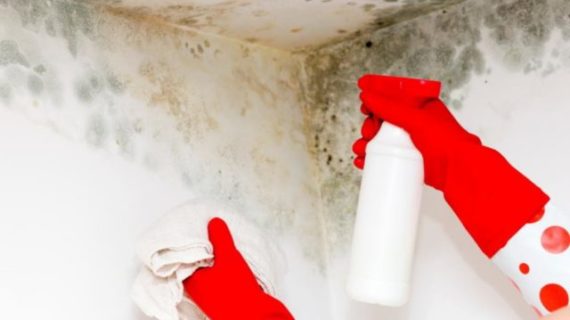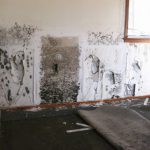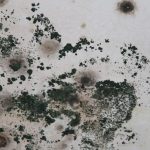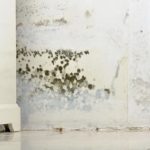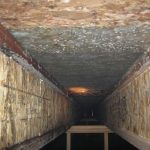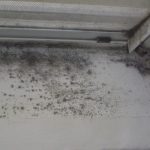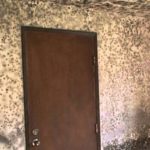It has become public knowledge that bleach is considered as one of the alternative ways to kill mold in your home. However, only a few people know the facts behind the use of bleach for killing black mold.
Does bleach kill mold? If so, what kinds of bleach that we can use and how to use it? Is it effective without any side effects? Find out below to get the answer to those questions.
Types of bleach and what they do
Bleach is a strong chemical substance commonly use to clean things or remove colors from things.
Along with detergent and soap, bleach is probably one of the most popular cleaning agents that you will find in almost every home. It is often labeled as laundry bleach in the market and sold at low price.
There are at least two types of bleach that you can easily find in the market or stores: chlorine bleach and oxygen bleach.
The first type, chlorine bleach, contains sodium hypochlorite as its active ingredients. Meanwhile, oxygen bleach is also known as sodium percarbonate, as it is mainly made of that chemical element.
Besides cleaning stains on the surface and clothes, both chlorine and oxygen bleach are famous for their other purposes.
Chlorine bleach is famous for its ability to kill virus and bacteria. Another type of bleach, oxygen bleach, also serves several purposes as sanitation agent and disinfectant.
Compare to chlorine bleach, oxygen bleach is safer and environmentally friendly. Non-toxic chemicals contained in this kind of bleach will not be harmful when having direct contact with human skin.
Chlorine and oxygen bleach usually sold in a powder state. Before using it, you need to mix the substance with water that can release their active ingredients, making the bleach is ready to do their job.
Does bleach kill mold?
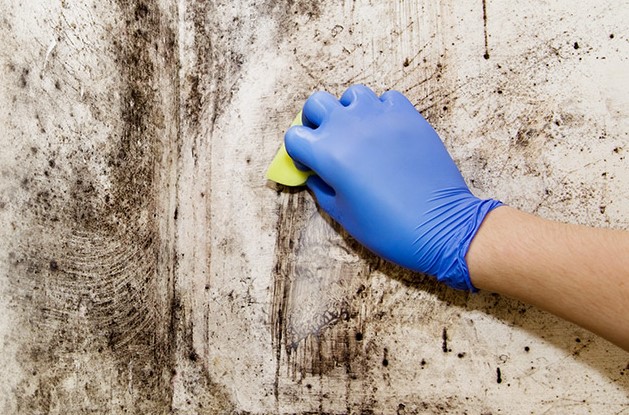
We understand that bleach consists of sanitation system that can kill bacteria and virus. Since mold comes from the same family as two microorganisms mentioned earlier, another question raised now is: does bleach kill mold as well?
In a simple explanation, the answer to that question is positive. Yes, bleach can kill mold. However, that answer also comes with several sides notes that you need to know.
- Bleach is only effective in mold removal when it is used to kill mold on solid and non-porous objects such as steel, concrete, or glass. Wood and other porous objects cannot be clean by bleach if they are infected with mold.
- Bleach will only kill mold on the surface. If the mold has been fixed firmly into the wooden substance, there is a chance that bleach will disappear before successfully reaching the source where the mold started to grow.
- If mold infects the drywall or wood construction in your home, never clean them up by using bleach. It might worsen your mold problem because you will think that the mold has been killed, when in fact, it keeps growing inside and can rise to the surface anytime without you realize it.
Step by step to kill mold by using bleach
Even though bleach will only kill mold in simple cases of infestation, it does have some chemical components which can be useful for mold removal.
Hydrogen peroxide and sodium carbonate contained in bleach can neutralize mold spores and allergens as well as sanitize the surface. There are two active substances and will be release once the bleach is mixed with water.
Use the steps below as the basic guide if you want to kill mold by using bleach.
- First thing first, opens your windows and doors to allow the circulation of fresh air in the area you need to clean up.
- Wear protective gloves if you worry that the bleach can be harmful to your skin. Wear eye protection as well when it is necessary.
- Mix the bleach with water. The ideal ratio to make the solution is one cup of bleach per gallon of water, or in other words, one part of bleach to ten parts of water. If you choose oxygen bleach, use warm or hot water since it can dissolve the bleach better and therefore, produce a better solution.
- One way to apply the solution is using cloth, sponge, or rag to clean the moldy surface. Another way is using a spray bottle to spread the solution over the area where the mold appears. Choose any application way that is more convenient to you.
- Wait for about fifteen minutes to let the bleach solution does the job.
- Rinse the area that has been cleaned up. Wipe thoroughly with water and let it dry. Your mold removal operation is completed.
Advantages and disadvantages of using bleach to kill mold
The following is several advantages that you can take when using bleach to kill mold.
- Both chlorine and oxygen bleach can kill mold and bacteria as well as deodorize the area that has been infected by mold.
- Oxygen bleach, in particular, contains safe materials that are natural and can decay without damaging the environment.
- Unlike chlorine bleach that can create toxic gas when mixed with ammonia or vinegar, oxygen bleach will not create any harmful substance.
- Bleach is relatively cheap and can be found easily.
However, using bleach to kill mold also has some disadvantages, as presented below.
- Bleach cannot remove mold on the porous and non-solid surface.
- When using bleach to kill mold, you only clean the visible parts of the mold without destroying its root.
- Improper use of bleach may work temporarily. It is possible that the mold still appears in a couple of days after the clean-up.
- Bleach can send chlorine gas to the air for about a week and might put your health at risk.
While the effectiveness of using bleach to kill mold remains debatable, a wiser gesture to remove the mold that bothers you is having your home professionally tested for mold infestation.
The result you get will determine whether mold problem in your home is minor or serious. A minor problem can be fixed by removing mold on your own, while serious cases of mold infestation obviously need the help from professional mold remover.
